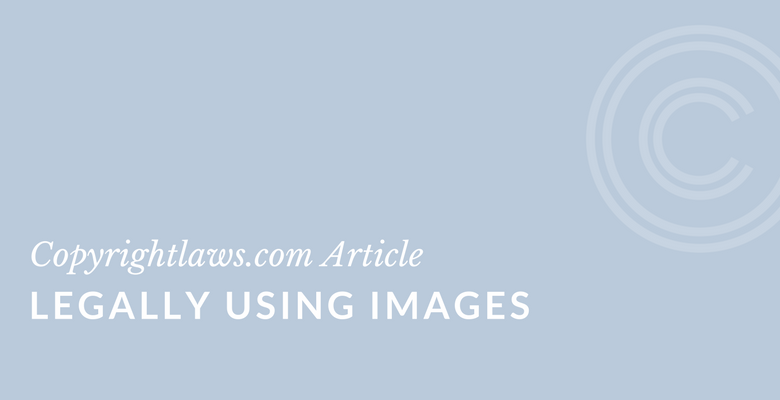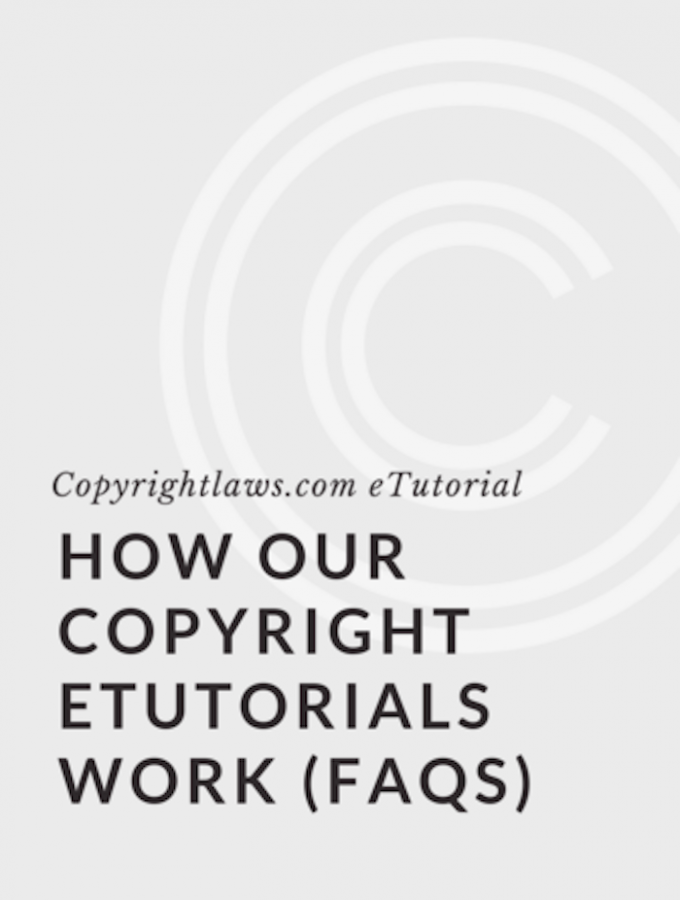
This article discusses how to minimize your copyright infringement risks by providing practical tips on legally using images. Think about ...
- Where do you obtain your images?
- Are you using images that you created, or images created by fellow employees?
- Are you using images you found on a website or on Instagram or Facebook? (See the information below about using images you find on Facebook.)
To determine whether you're legally using images, consider these two things:
- The source of the image
- Your use of the image
Below are tips and information on specific circumstances in which you may be using images. Also see our Legally Using Images eTutorial.
Are You Legally Using Images?
More and more we're using images to enhance text-based documents, annual reports, websites and on social media. As a universal rule, most images are protected by copyright laws around the world and you need permission to use an image as-is or to adapt it. Let’s look at some of the specifics surrounding this general rule.
Legally Using Images Under the U.S. Copyright Act
The definition of an image may vary. The U.S. Copyright Act defines images as “pictorial, graphic, and sculptural works” and defines these works to include:
two-dimensional and three-dimensional works of fine, graphic, and applied art, photographs, prints and art reproductions, maps, globes, charts, diagrams, models, and technical drawings, including architectural plans.
Section 101, Copyright Law of the United States
So illustrations, photographs, charts and the like are all protected by copyright.
The full range of rights attaches to owners of copyright in these works. They have the exclusive right to exercise their rights such as:
- Reproducing or republishing the image
- Preparing new images and other works based on the original image
- Distributing copies of the image to the public by sale or other transfer of ownership, or by rental, lease, or lending
- Displaying the image in public
Legally Using Images on Blogs
Does the use of an image on your blog require permission?
Certainly, if the image is part of the design of your blog and/or repetitively used or adapted for your use, you need permission to use the image. If the image is part of a particular posting or page in a blog, you need to apply the fair use factors and determine on a case-by-case basis whether your use requires permission.
Course Materials and Learning Management Systems such as Blackboard
When do you have to be concerned, copyright-wise, about using images in course materials and learning management systems?
Learning material is often enhanced with images. In an academic setting, the application of fair use to using images in course materials, especially one-time/one-semester use of an image in a university course, may be considered fair use. See more information on using copyright materials in the classroom.
Using Images in Libraries, Archives and Museums
Libraries, archives and museums are large users of images in exhibitions, displays and public materials, and of course on their websites and social media. If this applies to you, see our article Legally Using Images in Libraries.
Using Images from Facebook
You can't download and use images you find on Facebook without the permission of the photographer (or other copyright owner). But, you may think, others are downloading and sharing Facebook photos all the time so how can it be illegal? Although this may be a common occurrence, it's illegal. You can't take an image from Facebook and post it on your blog or include it in your book or presentation unless you have permission or that use falls within an exception such as fair use.
Similarly, you should only post images on Facebook with the authorization of their copyright owner, even images of friends and family.
In its Community Standards, Facebook includes a section on Respecting Intellectual Property. It states:
Facebook takes intellectual property rights seriously and believes they are important to promoting expression, creativity, and innovation in our community. [...] Before sharing content on Facebook, please be sure you have the right to do so. [...] Facebook's Terms of Service do not allow people to post content that violates someone else's intellectual property rights, including copyright and trademark.
Facebook Community Standards, Part V, 24 — Intellectual Property
Do You Always Need To Obtain Permission?
There are a few circumstances when you don't need permission; for example:
- The image you're using is in the public domain, including a U.S. federal government image. Note that not all government works are in the public domain. The U.S. government can own copyright when someone who is not a government employee (e.g., a consultant) assigns rights to it. See Copyright in U.S. Government works for further information.
- The copyright owner has clearly (and reliably) stated that you may freely use the image without obtaining permission.
- You've made a fair use analysis and are comfortable that your use falls within the U.S. fair use provision.
- The image has a Creative Commons (CC) license. Read that license! Does it specifically allow your use of the image? What do the terms and conditions of the CC license permit and is your use within those parameters? Remember to acknowledge the copyright owner.
Consider your best practices to lower copyright risks and how you can incorporate the information in this article into your daily work. Do you have a copyright policy that sets out best practices when using images in your organization?
Additional Rights to Consider When Legally Using Images
In the U.S., the creator of a work of visual art has additional rights set out in the Copyright Act. These moral rights grant an artist the right to have their name on their work and to prevent modifications that may be prejudicial to their reputation or honor.
A work of visual art is
a painting, drawing, print or sculpture, existing in a single copy, in a limited edition of 200 copies or fewer that are signed and consecutively numbered by the author, or, in the case of a sculpture, in multiple cast, carved, or fabricated sculptures of 200 or fewer that are consecutively numbered by the author and bear the signature or other identifying mark of the author;
Section 101, Copyright Law of the United States
and
a still photographic image produced for exhibition purposes only, existing in a single copy that is signed by the author, or in a limited edition of 200 copies or fewer that are signed and consecutively numbered by the author.
Section 101, Copyright Law of the United States
This doesn't include a
poster, map, globe, chart, technical drawing, diagram, model, applied art, motion picture or other audiovisual work, book, magazine, newspaper, periodical, data base, electronic information service, electronic publication, or similar publication
Section 101, Copyright Law of the United States
Other items that are not considered works of visual art include any work for hire (i.e., work made in the course of employment duties).
When Do Moral Rights Come into Play?
You need to consider moral rights when, for example, you're doing any of the following:
- Changing a photograph from color to black and white
- Manipulating a digital drawing
- Omitting the artist’s name from a print or drawing
However, in most countries outside the U.S., authors of all copyright-protected works — such as photographs, drawings, business documents and computer software — enjoy moral rights. Thus, when using images on websites or blogs, you should respect the moral rights of attribution and integrity. This is because authors have moral rights in countries where their works are accessed (if those countries grant moral rights).
For more in-depth information about legally using content plus practical strategies
to stay copyright compliant, see our Copyright Leadership Certificate.



